HYLAS 4
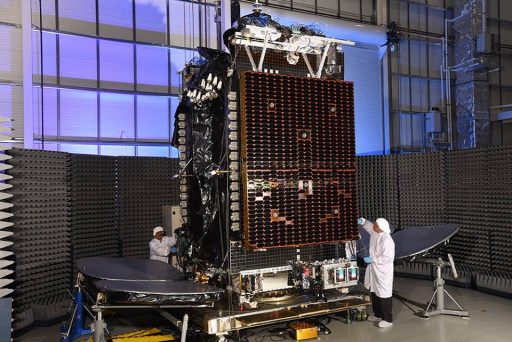
HYLAS 4 is a commercial high-throughput communications satellite operated by Avanti Communications Group to deliver broadband and networking services to markets in Europe and Africa via a powerful Ka-Band communications payload. The four-metric-ton satellite was built by Orbital ATK based on the company’s new GEOStar-3 satellite platform and will deliver capacity to grow Avanti’s existing markets and expand the company’s reach into new coverage areas.
Avanti Communications, headquartered in London, specializes in wholesale data telecommunications products for operators of networks for enterprise, carrier, government and consumer users. The company launched its first satellite in 2010 and plans to operate a constellation of five satellites, a series of high-throughput satellites operating in Ka-Band and a multi-band satellite designated Artemis, all coupled with an international ground network for fiber-class communications. Avanti holds reservations for the operation of Ka-Band satellites at 33.5°W and 31.0°E in Geostationary Orbit plus a multi-band slot at 21.5°E with permissions for S, L, Ku, and Ka-Band communications.
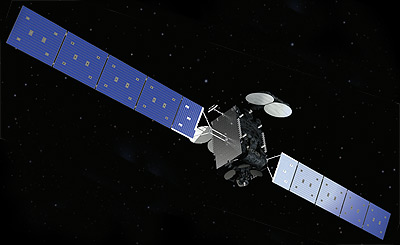
Avanti ordered HYLAS 4 from Orbital Sciences (now Orbital ATK) in August 2014 for a planned launch in early 2017 after the company already provided the second HYLAS satellite launched in 2012 as Avanti’s first high-throughput craft.
HYLAS 4 employs a powerful Ka-Band communications payload delivering up to 28 Giga-Hertz of capacity through 66 fixed Ka-Band beams positioned over Africa and Europe. Additionally, four steerable Ka-Band beams, each with two channels, can direct supplementary coverage where it is needed within the satellite’s footprint, potentially allowing an expansion of services into markets in Latin America or Africa. With its powerful payload, HYLAS 4 will double Avanti’s total capacity and expand services to 36 countries across the globe.
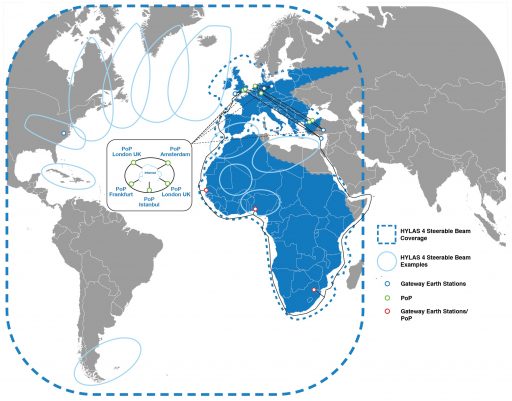
Destined for an orbital position of 33.5°W, HYLAS 4 was switched from an Ariane 5 launch in Q4 of 2017 to the VA242 mission targeting launch in March 2018. This allowed the satellite to be paired with a slightly lighter upper-berth passenger which in turn enabled HYLAS 4 to take on more propellant for use by its bi-propellant main engine.
The original plan for the late 2017 launch slot called for HYLAS 4 to complete around ten days of orbit-raising through its chemical engine before switching to its electric propulsion system for 100 days of orbit topping in order to reach a fully stationary orbit. With the greater propellant load for the bi-propellant engine, orbit-raising will be possible using chemical propulsion alone – allowing HYLAS 4 to be on station within ten days of launch – creating a lower-risk mission profile and providing additional fuel margins that allow a theoretical satellite life of 19 years with regard to Stationkeeping requirements.
GEOStar-3 Platform
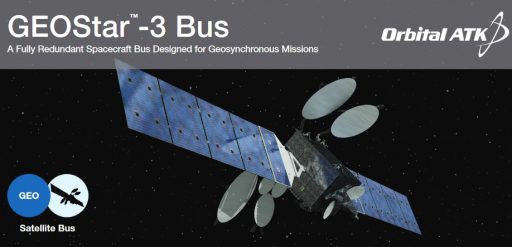
The GEOStar-3 satellite platform represents Orbital ATK’s largest satellite bus to date, leveraging experience from the company’s GEOStar-2 platform series and catering to an emerging class of satellites aiming for high-performance while keeping mass and volume low – requiring innovations in the area of power generation and electric propulsion.
Orbital ATK’s GEOStar-2 product line has flown successfully on nearly three dozen missions since 2002 with satellites in the 1.9 to 3.3-metric ton class and a payload power of up to 5.0 Kilowatts. The company cites the prime advantage of the GEOStar-2 in its small size yet high performance characteristics, allowing it to be launched cost-effectively as lower-berth passenger on Europe’s Ariane 5 rocket or slots with comparable performance on other vehicles.
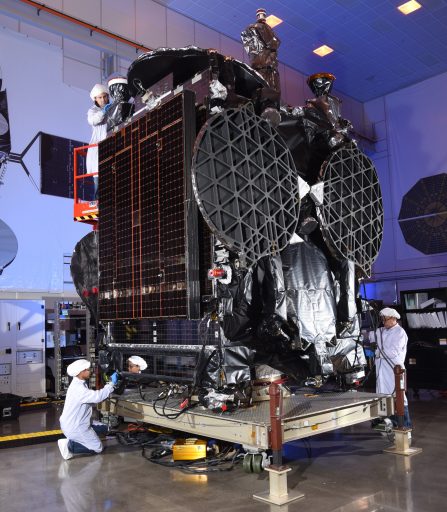
The GEOStar-3 satellite platform relies on robust heritage from the smaller GEOStar-2 with performance improvements in critical areas like power generation, structure and hybrid propulsion to create a low-mass platform with a high payload capacity, both in terms of mass and power. GEOStar-3 has been designed for satellites in the 3.5 to 4.5-metric-ton class and an end-of-life power up to 8 Kilowatts.
To satisfy the power demands of high-powered communications payloads, GEOStar-3 implements a number of enhancements within its Electrical Power System including an increase in solar array size and power output via Ultra-Triple-Junction Gallium-Arsenide solar cells and increased capacity of the vehicle’s Li-Ion batteries. Retained from the previous generation of Orbital ATK platforms is the 36-Volt power architecture that has proven very effective with a 100% success rate.
Structural improvements through the use of composite materials led to a decrease in bus dry mass while creating an optimal load-carrying capability and propellant tank accommodation. The satellite platform structure also allows for tandem launches and GEOStar-3 has been optimized for use as a hybrid satellite bus carrying conventional bi-propellant main and attitude thrusters for orbit-raising operations while Stationkeeping is either handled by the heritage ImpEHTs pulsed plasma thrusters or a new type of flight-proven Electric Propulsion System with increased performance characteristics (see below).
The GEOStar-3 bus can accommodate payloads up to 800 Kilograms and 8,000 Watts. Its thermal management system can support up to 72 radiatively-cooled Traveling Wave Tube Amplifiers or a larger number of TWTA’s employing a combination of radiative and conductive cooling. GEOStar-3’s scalable thermal control system can dissipate up to 4,800 Watts of heat, allowing it to host high-power communications packages.
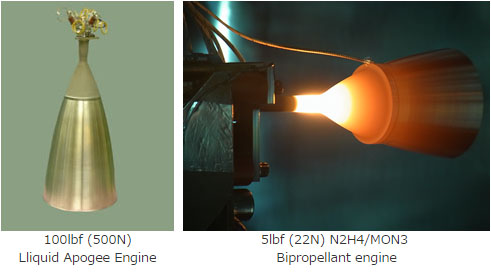
Leveraging decades of experience in space-based deployables, GEOStar-3 can support a variety of deployable reflectors and nadir-facing antenna configurations. The platform can also host custom-fabricated appendages and various hosted payloads to broaden its operational use beyond the scope of communication missions.
The hybrid propulsion concept employed by GEOStar-3 relies on a liquid-fueled bi-propellant main engine for orbit transfer from the satellite’s initial injection orbit into a near-geostationary orbit with hydrazine monopropellant thrusters in use for attitude control before and during main engine burns.
he Xenon Hall Current Thrusters of the satellite are employed for ‘orbit topping’ – transitioning from the near-GEO orbit into a stable GEO at the satellite’s desired position. Stationkeeping will primarily use the electric propulsion system, though the thrusters are available to use propellant reserves and extend the satellite’s stationkeeping capability.
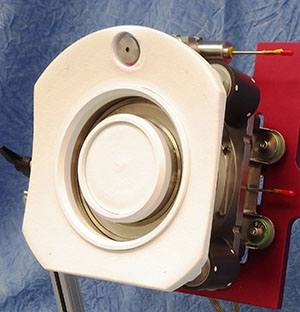
HYLAS 4 employs an IHI BT-4 main engine which has been used abundantly by Orbital ATK on the company’s geostationary satellites as well as the prime maneuvering thruster of the Cygnus cargo spacecraft servicing the International Space Station. BT-4 was developed by IHI Aerospace, Japan and has a dry mass of 4 kilograms and a length of 0.65 meters. The engine provides 450 Newtons of thrust using Monomethylhydrazine fuel and Nitrogen Tetroxide oxidizer. The attitude control thrusters rely on the catalytic decomposition of Hydrazine over a metallic catalyst bed into gaseous reaction products expelled to create thrust.
The satellite hosts four 4-Kilowatt-class XR-5 Xenon Hall Current Thrusters developed and built by Aerojet Rocketdyne. XR-5 has successfully flown on the U.S. Air Force AEHF communications satellites and a modernized version, XR-5A, successfully completed testing on the fourth mission of the X-37B Orbital Test Vehicle.
XR-5 was developed in the 2000s and has operated extensively in orbit at power levels of 3.0 to 4.5 Kilowatts at both 300 V and 400 V. Using zero-erosion technology, the XR-5 has been demonstrated to support over 10,000 hours of operation and over 7,000 starts. Its operational flexibility for power and voltage allows an optimization between mass and cost savings by allowing low-voltage, high-thrust operation of the thruster during orbit topping to accelerate the in-service date for the satellite while the high-voltage, high-impulse setting allows for efficient and prolonged stationkeeping over extended mission durations to allow satellites to drive in revenue beyond their expected service lives.
At their baseline setting, each XR-5 thruster delivers 280 Millinewtons of thrust at a specific impulse of 1,815 seconds. Through extensive ground testing, the performance map of the XR-5 could be broadened to power settings between 1 and 5.5 Kilowatts, allowing for high-impulse operation up to an Isp of 2,700 seconds. The total impulse expected for the thruster’s service life and a throughput of 450 Kilograms of Xenon is in excess of 8 MN-s.
